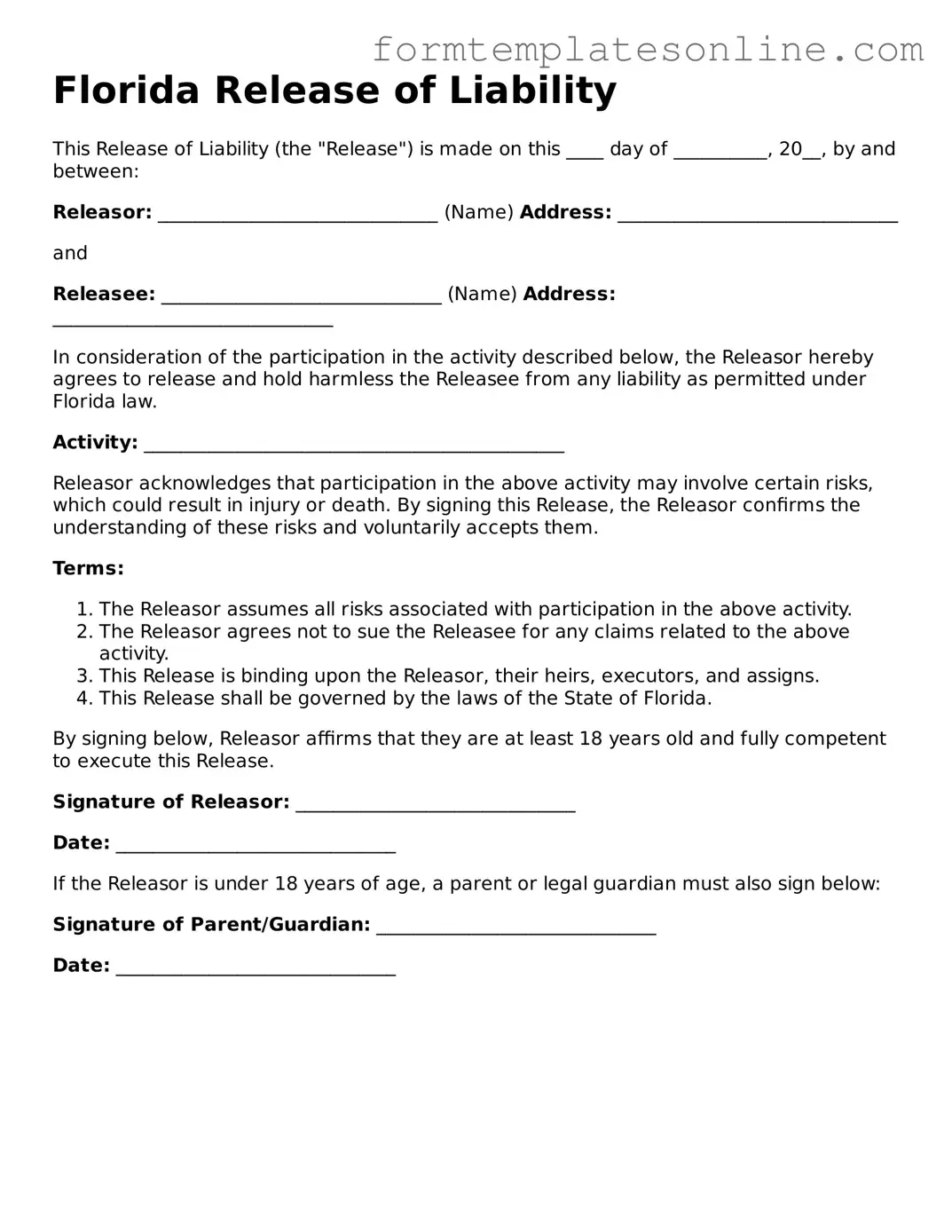What is a Florida Release of Liability form?
A Florida Release of Liability form is a legal document that protects an individual or organization from being held liable for injuries or damages that may occur during a specific activity. By signing this form, participants acknowledge the risks involved and agree not to hold the organizer responsible for any accidents or injuries that may arise.
When should I use a Release of Liability form?
This form is commonly used in situations where participants engage in activities that carry inherent risks. Examples include sports events, recreational activities, and even certain professional services. If an organization or individual wants to mitigate their liability, using this form is a prudent step.
Who should sign the Release of Liability form?
Typically, all participants in the activity should sign the form. If a participant is a minor, a parent or guardian must sign on their behalf. This ensures that everyone involved is aware of the risks and agrees to the terms of the release.
Is a Release of Liability form legally binding in Florida?
Yes, a properly drafted and executed Release of Liability form can be legally binding in Florida. However, certain conditions must be met for the form to be enforceable. The language should be clear, and the risks should be adequately described. Additionally, the signer must be of sound mind and not under duress.
What should be included in a Release of Liability form?
A comprehensive Release of Liability form should include the names of the parties involved, a detailed description of the activity, acknowledgment of the risks, and a statement of release from liability. It may also include a section for emergency contact information and any specific conditions that apply to the activity.
Can I modify a Release of Liability form?
Yes, you can modify the form to suit the specific needs of your activity. However, it is important to ensure that any changes do not compromise the clarity or enforceability of the document. Consulting with a legal professional can help ensure that your modifications are appropriate and effective.
What happens if someone is injured despite signing the form?
If an injury occurs, the enforceability of the Release of Liability form will be examined. Courts will consider factors such as whether the risks were adequately disclosed and whether the injured party acted negligently. In some cases, the form may not protect against gross negligence or willful misconduct.
Do I need a witness or notarization for the form?
While it is not legally required in Florida to have a witness or notarization for a Release of Liability form, having one can add an extra layer of credibility. A witness can help confirm that the signer understood the document and signed it voluntarily.
How long is a Release of Liability form valid?
The validity of a Release of Liability form does not have a set expiration date. As long as the terms of the form remain relevant and the activity has not changed significantly, it can be considered valid. However, it is advisable to review and update the form periodically to ensure it reflects current practices and risks.
Can I use a Release of Liability form for a business?
Absolutely! Businesses often use Release of Liability forms to protect themselves from claims related to their services or activities. Whether you run a gym, offer outdoor adventures, or provide any service with inherent risks, this form can be a valuable tool in managing liability.
